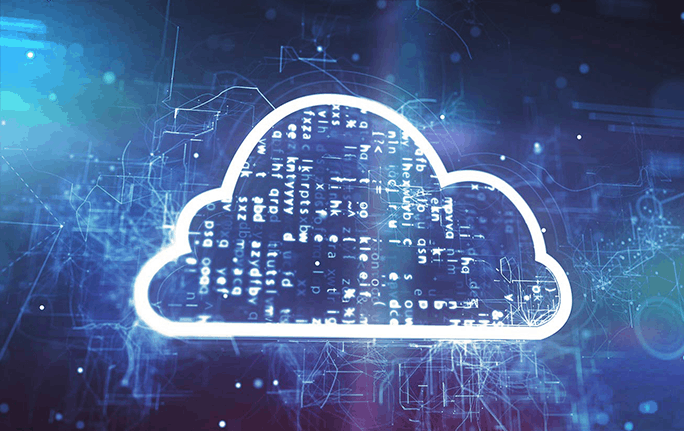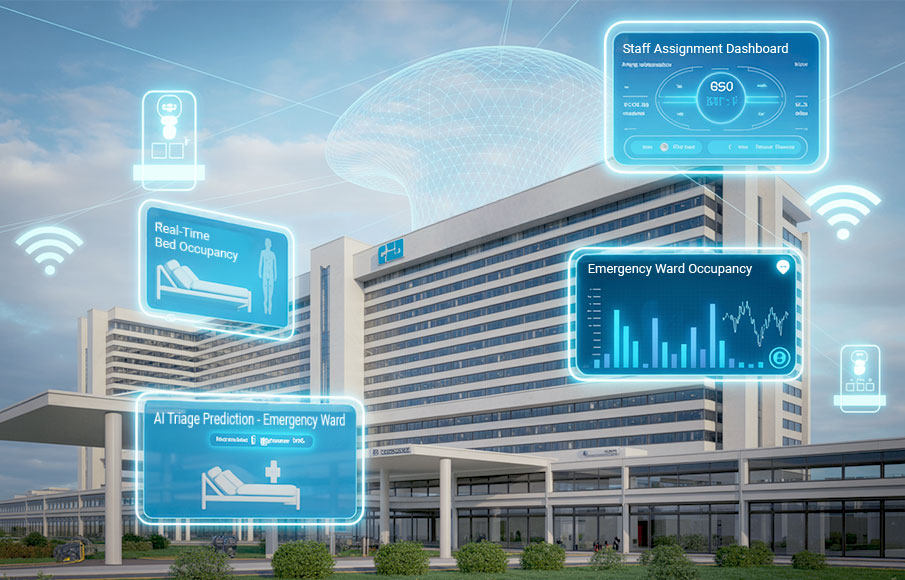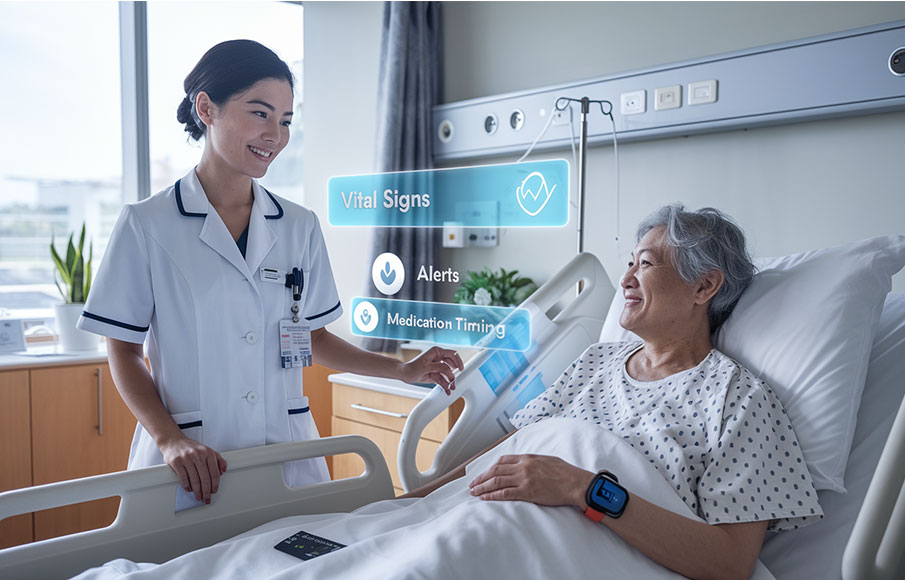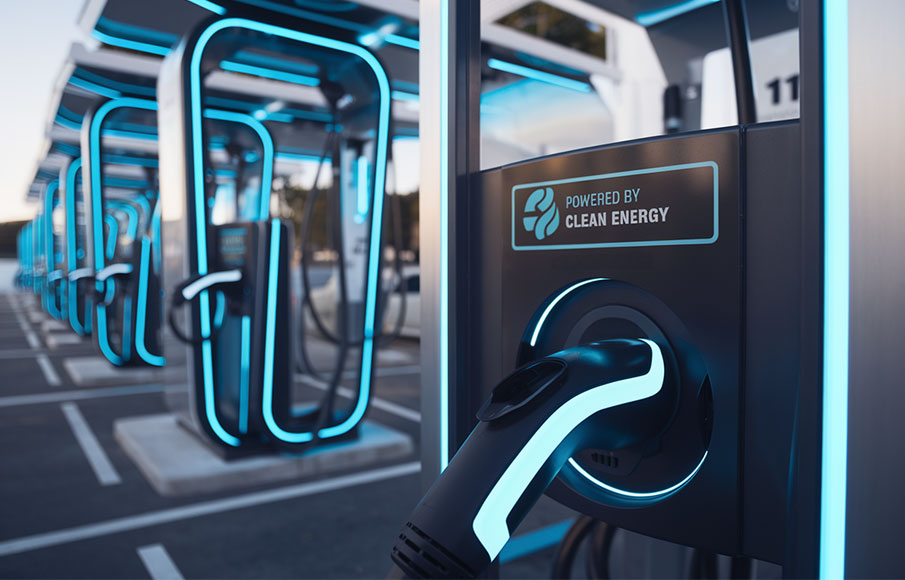Edge Cloud Computing: What Is It & How It Can Benefit You
- 04 March 2021

Everyone is familiar with cloud computing. Many enterprises host their applications on AWS or Google Cloud for example because it is an affordable and scalable solution for their computing needs. They pay a monthly subscription, can choose to increase their computing power as needed, all without the hassle of having to manage, own and maintain on-premise servers.
However, cloud computing may have a few draw backs depending on the use cases. The end user is unable to know or control at which location their data is being processed. This can result in lowered responsiveness as the data could be processed very far from the source, resulting in a delay from sending information to the cloud, processing it, and sending back the output.
You may have even experienced this yourself, when you ask your Smart Home Device a question, it takes a few seconds to send your question to the cloud and get an answer before replying you. This happens for any cloud service provider whether it’s AWS, Apple iCloud or Google Cloud.
Edge cloud computing seeks to bridge this gap and improve the responsiveness of connected devices by delivering compute power closer to the data source and network edge. Given the increased use of Internet-of-Things (IoT) smart devices, example for Augmented Reality and Facial Recognition, edge cloud computing will become increasingly important to improve application performance and further propel the growing use of IoT devices.
What is Edge Cloud Computing?
Edge cloud or edge cloud computing is an evolution of cloud computing that distribute compute, storage, and networking resources outside of the network core and closer to the end user.
By processing data locally (at the edge of the network), instead of a centralized data center, edge computing enables businesses to reduce latency and improve operational efficiency. Meanwhile, cloud computing ensures access to resources in the cloud in real-time from any location or device.
Unsure about the differences between edge and cloud computing?
Why is the Edge Cloud Computing Important?
What makes Edge computing important is the ability to achieve real-time responsiveness of mission-critical data. Typically, on-premise solutions such as centralized data centers allow you to process data more quickly but require a higher investment into infrastructure and manpower. However, a cloud computing solution will mean delays in data delivery since data has to be sent back to the cloud belonging to the cloud service provider and you may end up with higher bandwidth requirements if you are consistently transmitting large amounts of data.
Edge cloud computing solutions provided by cloud service providers utilise edge devices or hubs that are closer to your devices. Your devices can send raw data generated to an edge cloud computing hub, have the data processed and then only send back the relevant information to your HQ or DC. This will improve responsiveness and reduce bandwidth requirements.
If you have data localisation requirements, edge cloud computing enables you to keep sensitive data on local servers that are highly secure without having to send it globally to the centralised cloud.
Here are the benefits of edge cloud computing:
- Lower latency
- Lower cost of ownership (vis a vis on premise solutions)
- Scalability
- Compliance with data localisation rules
Are you looking for an edge cloud computing provider in Singapore? SPTel ensures your solution is closer to the people, events and industries that you serve for more responsive edge cloud computing.
Applications of edge cloud computing
Edge cloud computing can be used in any situation that requires real-time responses and data transmission from IoT solutions such as autonomous vehicles or video analytics.
Manufacturing
Connected machinery and equipment can send real-time data on manufacturing process yield, production output and status. This will allow managers to make adjustments to improve efficiency.
Edge cloud computing also powers the use of IoT in factories and enable predictive maintenance. IoT sensors can pick up signals that indicate that equipment is due for servicing and maintenance work, which can avoid downtime that may lower production efficiency. IoT also facilitates the use of augmented reality to troubleshoot factory issues and provide remote support.
Retail
IoT sensors can be used in a retail outlet to track footfall and the products that attract the most attention and interest. This would enable a store manager to stock up on items that sell quickly proactively and make decisions on product placement. A Point of Sales (POS) video analytics solution can also be used to quickly serve the right ad to the right person as they are viewing the display.
Smart Facilities
IoT technology can further be used to manage facilities. Building managers can enable auto-locking for rooms to increase security and use intelligent features that predict and manage environmental conditions. For example, air-conditioners can be set to turn on automatically when someone is in the room.
Video analytics can be used to track mobility and areas where queues or congestion are forming so that building managers and traffic wardens can act quickly to smoothen out traffic flow.
Furthermore, governments are partnering with cloud service providers to look at video analytics and contact tracing, such as Singapore’s TraceTogether app. They are considering using video analytics as tools to monitor public health and mobility during the pandemic. These depend on IoT technology to gather data from various devices and inputs and gather them for real time analysis. The data collected can be processed at the nearest edge cloud location and enable government authorities to react swiftly to prevent further viral infections within communities.
Capabilities of edge cloud computing with cloud service provider SPTel
Improved Responsiveness
SPTel’s pervasive hubs around the island means your computing is done close to the data source. This provides you with faster computing speeds and lower latency without having to make a hefty investment into on-premise solutions.
You also don’t have to transmit large volumes of data to the cloud or a central data centre which can lower the cost of bandwidth. SPTel can connect our edge cloud servers to data centres and public clouds to complete the data transmission ecosystem.
With SPTel as your cloud service provider, you benefit from
- Enhanced performance as IoT devices need only to relay data to their nearest Edge server for fast data processing
- Lowers the bandwidth required to relay data, allowing companies to expand their computing capacity and optimise their network expenditure
Get Started with SPTel’s Edge Cloud Computing
SPTel’s edge cloud computing services offer a powerful solution for businesses looking to reduce applciation latency while outsourcing hardware maintenance and management.
Harnessing the best of both worlds is SPTel’s edge cloud computing technology. Speak to us to find out how our solutions can help you drive greater business efficiency today.












